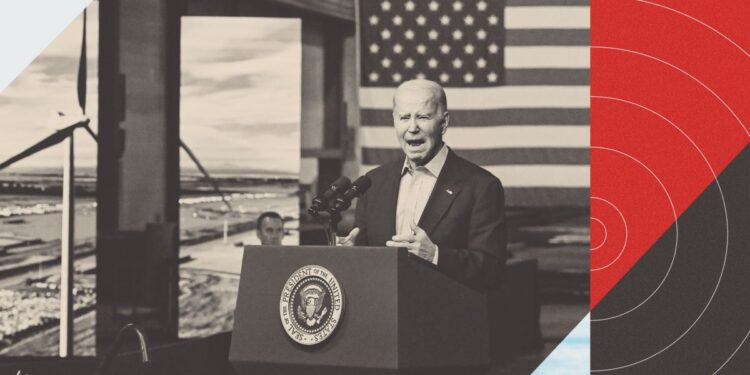In 2022, President Biden and Congress passed the Inflation Reduction Act, securing over $370 billion for climate infrastructure. According to an oversight report from June 2024, only 12 percent—or $4.4 billion—of the funding had been spent. Biden rushed to “Trump-proof” another $96.7 billion in his last days of office by signing between the government and recipients.
But that preparation may have not been successful.
On day one, Trump countered with an executive order that includes halting federal disbursements of IRA funds, even if the money had already been obligated. Investors fear that the $300 billion of the IRA loans are at risk, though tax credits are likely not going to be effective, and have already started withdrawing new energy projects.
On February 10th, Judge John J. McConnell, Jr. ordered the administration to immediately unfreeze IRA funds. It’s unclear what will happen next. Top members of the Trump administration have been questioning judges’ authority over Trump, which legal experts warn is a “constitutional crisis.”
What happens now? To see how Trump can, or cannot, halt green energy money I called Don Kettl, a professor emeritus and former dean at the University of Maryland School of Public Policy. He has spent his entire career looking into public management and how the government functions. Below Kettl explains what limits hold Trump accountable in making sweeping changes and how he may sidestep them.
This interview was edited and condensed for clarity.
Can Trump stop funding?
It’s an interesting question that we’re going to see over and over and over again. Does the administration have the obligation to spend money that Congress has appropriated?
We have had battles about the president’s rescission power since back during the Nixon administration, and its aftermath.
It’s very clear also that the Trump administration coming in is intent on trying to find every conceivable way to test the boundaries of presidential power. There’s a lot of talk back and forth about how the Trump administration can act, but it’s an effort to try to push back the boundaries that constrain presidential action in every respect.
The intent in congressional passage and appropriation is that the money that’s appropriated will be spent. It’s then a matter of trying to figure out how it is that state, local governments ought to do it. The question is, if we have our mind as president and we don’t think that the money ought to be spent, do we get to put hold on all the stuff? The basic question of empowerment is something that’s very much an open question.
There are lots of ways the new administration can go stand in the gears, even if it proves unsuccessful in them expounding the money, and I expect they’re going to try.
What are the safeguards in the Inflation Reduction Act?
First, there is the reporting. There are contracts that have to be negotiated and all of them have provisions in them for performance. There always are audits that come along with that as well. And then, in addition, there are reporters who are out there keeping a close eye on the way in which the money is being spent.
So, this is about to get incredibly contentious—because the Trump administration is going to come in and say that some of this money is being wasted just because of what it is, and how it is that state and local governments are proposing to spend it. But waste in the eye of the beholder here.
My guess is that two things will happen.
One is an effort to go through and cherry pick stories to say “can you believe that your federal government tax dollars are going for this?” We’ve seen that over and over and over again in the past, and then with the collection of some of these stories.
The next piece is to try to cut the program out, to eliminate the funding.
Are there pathways for the money to be misappropriated? Or for a certain far-right electric vehicle CEO to get a lot of it?
There are guidelines for the way in which the money should be spent. But when it comes to clean energy in particular, there are huge numbers of background questions about who going to be favored. As you suggest, projects that benefit EVs may end up getting more money than would be the case otherwise.
When you start talking about where lots of money involved in lots of contracts might go, there are pressures that could come up in terms of who gets the money, and about the question of the trail of the funds and who’s connected to whom.
It can take quite a while to to sort out whether or not somebody with a financial interest connected to a major donor is getting some of the money. That’s a hard thing to try to sort out. So there are lots of ways on the inside that could create internal conflicts.
It’s not merely going to be a matter of a fundamental battle between potentially an administration not fond of clean energy to begin with. We’re talking about drill baby drill—and on the other hand someone like Elon Musk, who is head of a big company that produces lots of cars that are EVs.
Those tech bros are looking at lots and lots of things that are very power-intensive. Who would have thought we would have had a restart at Three Mile Island in Pennsylvania? The idea that we would have gone from a point where my parents literally had suitcases at the door ready to leave their home and perhaps never, ever be able to return because of the meltdown at the power plant there to the idea of starting it up all over again.
It is a whole lot more interesting than just the basic question of a new administration coming in intent on trying to reverse the Biden administration’s clean energy goals.
Will the use of IRA money in pro-Trump communities limit Trump’s hand in stopping the flow of money?
There is an inevitable tension that comes along with the new administration that wants to stand up and beat its chest on a new policy goal, whatever it may be. It will be pretty easy, on the one hand, for the Trump administration to say that they’re not going to force you to buy electric cars and do that through broad regulatory change at the Department of Transportation.
But at the same time to recognize the popularity of money flowing out to Republican areas with lots of opportunity to make lots of jobs. And it can at the same time fuel the kinds of things that maybe other parts of his coalition, like the tech bros, may be in favor of—like electric cars.
It’s pretty easy to try to resolve this paradox: You resolve the paradox by not resolving it.
You allow a basic policy change at the top and at the same time you don’t try too hard to choke off the flow of funds. Once you’ve been able to establish some of the really big policy goals, rhetorically at least, and once you’ve decided that you don’t really care that much about the deficit, then it’s pretty easy to let the money slide and use it to try to continue to encourage support by encouraging the flow of funds into the places that already are likely to favor you politically to begin with.







